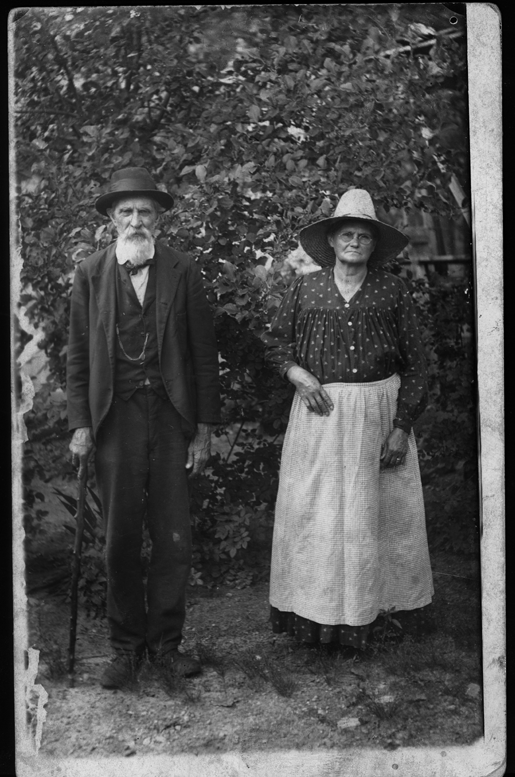We have a small "side yard" off of our main back yard area. It has mulch in it, which is apparently catnip for dogs, of which we have four. We are doing some planting bac

k there and decided that a gate had finally become necessary. We didn't want a full fence-height gate there, as it would tend to completely block in both of the areas it separated in a way that restricted the open style of the house and yard. So I took it upon myself to build this thing and am happy with the results. Since it's functional, but decorative, I made no attempt to copy the style of the fence it's up against other than to use the same type of wood: cedar. You can see the baby Yakuza Chinese Maple in the far background.
Here's a picture of the back of the gate. It is done in a very minimalist fashion. Since fences typically start to lean after a few years, I wanted this gate to be independent from the fence itself--so I anchored it to t

he house. This is the only area where there is a lot of metal hardware. I used masonry anchors and put them into the concrete foundation and the rock wall itself. That sucker will hold better than any wood post. I did place a post on the static side of the gate, but it bears almost no weight. While the gate extends all the way to the fence opposite the house, it is not secured to it. This allows for movement and shifting of the fence

without hurting the gate. Lastly, I included a hidden latch that is not visible from the front and tucked away nicely in the back. I briefly considered hiring someone to do this job, but I don't believe most contractors would have taken the time to build it as seamlessly as I did--because it isn't their house. What I learned is that building something like this has very little to do with actual skill. The key is giving a crap and being patient. Here's what you have to know how to do to build a gate like this:
1. Saw wood. Cedar is rather soft and easy to saw. Even with a hand saw, which I used for all the boards.
2. Drill a hole. If you have a drill (a hammer drill is better for masonry, but any drill with a masonry bit will eventually do the trick) you can do this.
3. Know how to use a level. Here's how you do that: put the level on the surface you want level. Now watch the bubble. If it's in the middle, you win!
4. Know how to install a post. Here's how: dig a deep hole (a post digger tool helps), put the post in it. Then follow the directions on your 50 lb pound bag of cement (let me summarize those for you here: Step 1. Fill 1/3 of the hole with water. Step 2. Fill that water with cement. Step 3. Top up the hole with an even ratio of water and cement. Step 4. Check vertical and horizontal level of your post as cement sets (usually 30 minutes set time)). Total cost: About $100.
If you can master these simple tasks, you can build a great gate and be awesome like me!!!!!
.JPG) Exciting eh?
Exciting eh?.JPG) ...and here:
...and here:.JPG) You can see that there are sections cut out of each end, but on opposite sides so each board looks like a really long "Z". You drill 3/4" holes through each "tab."
You can see that there are sections cut out of each end, but on opposite sides so each board looks like a really long "Z". You drill 3/4" holes through each "tab.".JPG)
.JPG)

.jpg)
.jpg)







